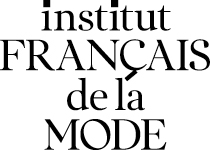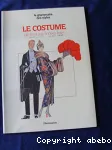| Type de document : | Ouvrage |
| Titre : | Le costume de 1914 aux années folles |
| Auteurs : | DELPIERRE Madeleine |
| Editeur : | PARIS : FLAMMARION, 1997 |
| Collection : | TOUT L'ART |
| Langues | Français |
| Format : | 79 p. / ill. en coul. |
| Présentation : | ill. en coul. |
| ISBN/ISSN/EAN : | 978-2-08-011235-4 |
| Mots-clés : |
Nom Commun 20EME SIECLE ; ANNEES 20 ; ANNEES 30 ; COSTUME ; HISTOIRE DE LA MODE |
| Note de contenu : |
En bouleversant profondément l'équilibre social, la Première Guerre mondiale engendre une modification du rôle imparti aux femmes : la revendication égalitaire, le refus des contraintes et le désir d'émancipation vont se traduire dans leur façon de se vêtir. La nouvelle femme des années vingt abandonne les cheveux longs, raccourcit ses jupes, taillées désormais dans des tissus souples. Plus que jamais les artistes participent à la mode, qui se révèle attentive aux avancées du cubisme comme aux découvertes de divers folklores. Mais la crise économique met fin à l'euphorie de l'après-guerre et le costume prend dans les années trente une certaine gravité classique. La garçonne laisse la place à une femme plus naturelle, qui retrouve sa taille et ses formes, tandis que les hommes adoptent une silhouette eux aussi plus sportive, préfigurant l'évolution de la mode après la Seconde Guerre mondiale. (Notice de l'éditeur)
By profoundly upsetting the social balance, the First World War brought about a change in the role assigned to women: the demand for egalitarianism, the refusal of constraints and the desire for emancipation were to be reflected in the way they dressed. The new woman of the twenties abandoned long hair and shortened her skirts, now cut from supple fabrics. More than ever, artists were involved in fashion, which was attentive to the advances of Cubism and the discoveries of various folklores. But the economic crisis put an end to the post-war euphoria, and in the thirties, costume took on a certain classical gravity. The garçonne gave way to a more natural woman, who rediscovered her waist and curves, while men adopted a more athletic silhouette, foreshadowing the evolution of fashion after the Second World War. (Editor's note) |
Exemplaires (2)
| Cote | Support | Localisation | Section | Disponibilité |
|---|---|---|---|---|
| 0.2 - 2665 | Ouvrage | Bibliothèque IFM | 0.2 Histoire | Disponible |
| F-HIST 652 | Ouvrage | Domaine des Oseraies | Bibliothèque de mode | Exclu du prêt |










